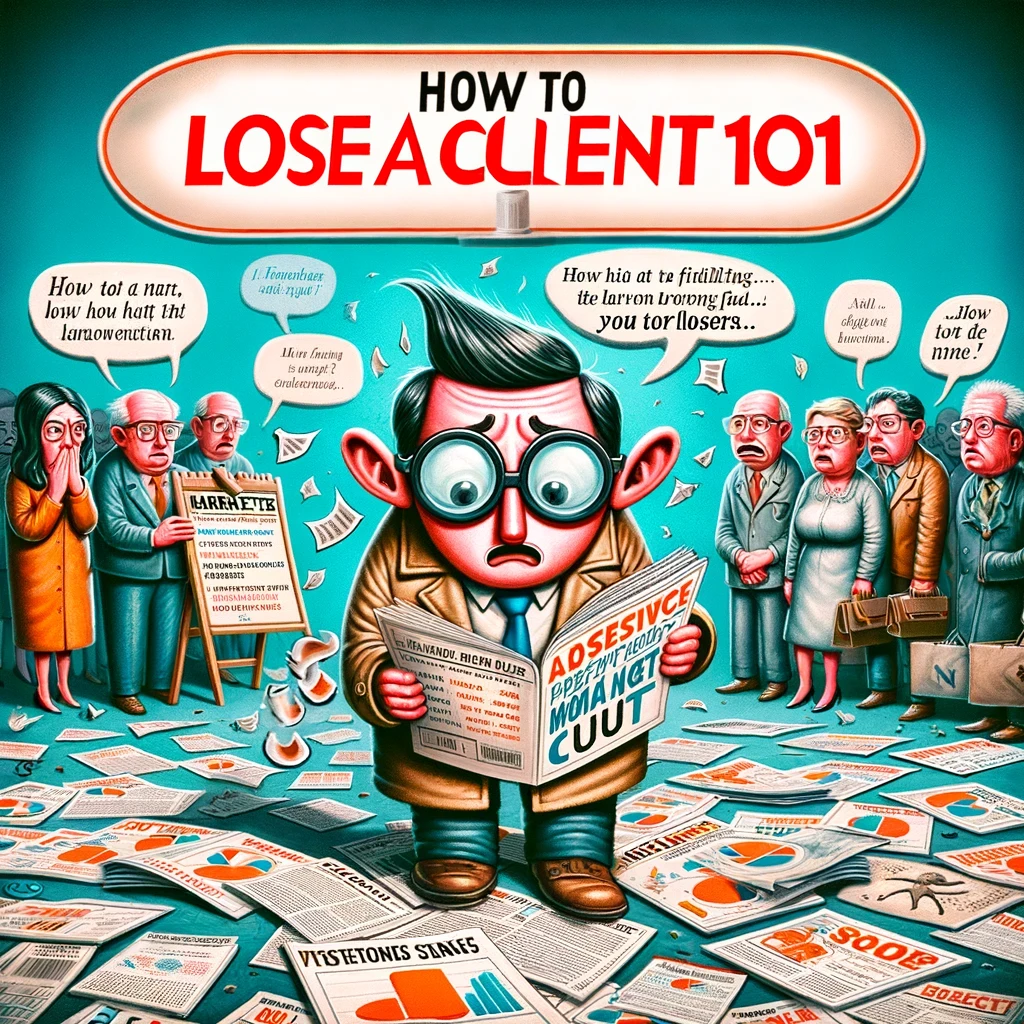· Connor Lopez · Tutorials · 3 min read
How To Lose A Client 101

Instead of acknowledging individuals as humans, reduce them to “an account.” Dismiss their feedback, comments, or content. Indicate their support as insignificant due to their lack of influence. Yet, hope they continue supporting your brand. Voila! You’ve streamlined the brand’s downfall in just four simple steps.
However, let’s face it—acquiring clients is challenging, and that’s precisely the essence of marketing, consuming every marketer’s energy round the clock. Therefore, instances where clients approach you with proposals and feedback akin to “Shut Up and Take My Money!” are every marketing department’s fantasy. Surprisingly, such cases are not as rare as one might assume; they often slip through the cracks.
Take, for instance, an interaction between a customer and a healthy protein bar brand, a perfect example that encompasses the aforementioned four steps.
Customer:
Shares an Instagram Story praising the Brand (User Generated Content UGC)
-- “You guys cracked it! Honestly the best protein bars I have come across and believe I've tried them all. I've been on a hunt to stock up on more but cannot find them anywhere in Warsaw. Would appreciate it if you could send some. Honestly, if you're interested in a collaboration, I would gladly become your ambassador to create content. Truly believe in your products, their uncompromising taste, your brand values and philosophy. Let me know if such a collaboration would be of interest or if you have any other ideas!”
Brand:
-- “So happy to hear that you like them <3 <3. Unfortunately we just work with accounts over 5K (smiley face emoji)”
In the above exchange, a customer reaches out to the brand, expressing genuine admiration and satisfaction while offering to become an ambassador out of belief in the product and a desire to contribute to the brand’s success story.
The brand’s response, however, to the client’s positive feedback, UGC, and a proposal that would typically be considered a golden opportunity in marketing, was a grave mistake. In short, it would have been better if they hadn’t responded at all, leaving room for doubt.
A loyal client who could have potentially catalyzed the brand’s success was not only lost but immediately turned from a fan to a detractor. This is how enthusiasm gets extinguished, much like when some adults crush a child’s dream of becoming an astronaut.
This interaction exposed the brand’s true values—or lack thereof. It revealed a disregard for customer relationships, satisfaction, loyalty, and a preference for collaborating with influencers solely based on numbers. Goodbye, reputation.
However, what’s done is done. Fortunately, this isn’t our concern. Let’s take this as a lesson and consider what the brand could have done differently.
Instead of brushing aside the feedback, they could have shown genuine appreciation and thanked the client for their efforts and time. At the very least, they could have sent a personal discount code for their products, retaining the client and making them feel valued.
Better yet, they could have sent products to the loyal customer and made them an ambassador. After all, why pay an influencer solely for their follower count when a customer with a smaller following might have more influence in the “real world,” such as within a large community of fitness enthusiasts? The answer is clear.
Marketers often forget Socrates’ golden quote, “The only thing that I know is that I know nothing.” Making decisions solely based on soulless numbers has its place but reaches its limits when it comes to directly communicating and connecting with a customer, a human.



